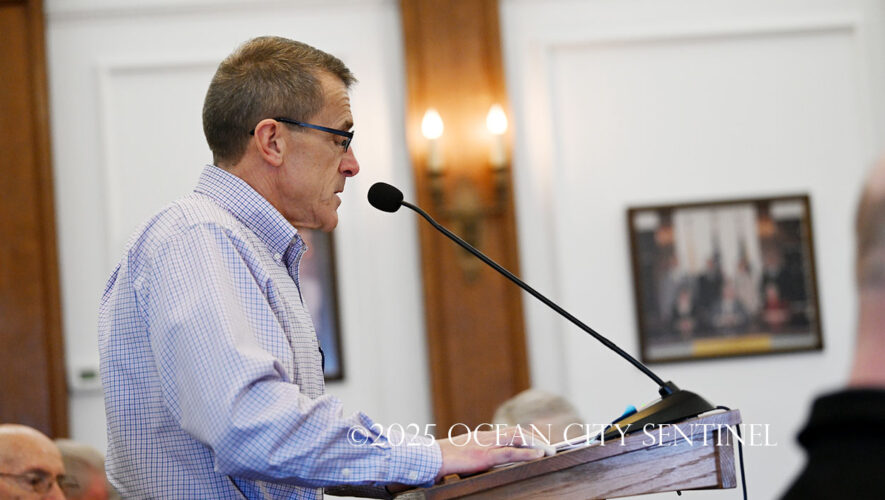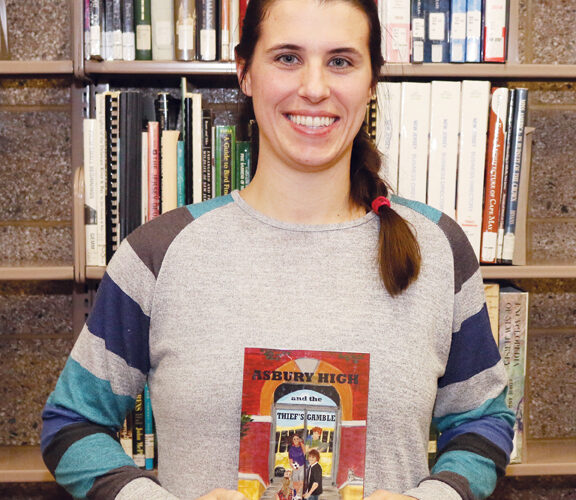‘Ocean City’s Westside: Breaking Barriers, Building Bridges’
OCEAN CITY — Local author Loretta Thompson Harris has just released the second book in her trilogy, a followup to the popular “The Westside – Ocean City in True Color,” about a historically overlooked part of the community.
The new book is “Ocean City’s Westside – Breaking Barriers, Building Bridges.” In the author’s introduction, she writes the book “brings to light the daily life of new arrivals as they managed to eke out a living and slowly improve their lot, making their neighborhood a more promising place for those who followed.”
Thompson Harris will be the featured speaker from 1 to 3 p.m. Saturday, Aug. 10, at the Ocean City Historical Museum inside the Ocean City Community Center at 1735 Simpson Ave. Her books will be available for purchase and she will be signing copies.
The author has divided her new book into five chapters. The book is much thicker than her first volume because she was inundated with information as she responded to questions she gets when researching the history of the people of color who made a neighborhood of Ocean City their home.
“Each of the categories seemed to keep growing and growing and growing,” she told the Sentinel last week.
A lot of that is because of the treasure trove of photographs, clippings, old advertisements and names of people of note that accompany the text in the book.
The first chapter is “Bringing Home the Bacon,” about all the things people did to make a living in the resort.

The chapter includes the public service employees for the city, the police and fire departments, entrepreneurs and a section titled “Doctors, Lawyers and Indian Chiefs” and how the city’s Black population numbered three in 1885, grew until it peaked in 1970 with 815 members and fell to below 300 in 2020.
One photo shows the former high-end Kabat Men’s Shop on Asbury Avenue with the caption noting Richard Kabat hired “impeccably dressed Dan Henry as a salesman, the first person of color to work in sales in Ocean City’s downtown business district.”
Thompson Harris titled the second chapter “Birds of a Feather,” about the different types of housing in Ocean City.
“There was a surprising number of row houses, which I discovered as I was researching,” she said. “I had never thought about it. We lived in a row house when I grew up.” She found a number on the Westside, but also in other places in the city. “We call them townhouses or condominiums, but they’re really just row houses.”
She also discovered a number of people had large land holdings in the resort. The author covered that in her first book, but learned more while finding information for this volume.
The third chapter is called “The Elephant in the Room.” It deals with racism.
“My intention was to confine everything about racism to one chapter in hopes it wouldn’t color everything else, but it really didn’t work out that way,” Thompson Harris said, “because racism really affects everything when you boil it down.”
The chapter includes painful, personal reflections about the instances of racism they faced, where they could and could not go, about being spit on, white boys jumping a group of Black boys after school and how a teacher who didn’t want women or Blacks in his class graded unfairly. That was by the author herself who noted that was even though she scored in the 98th percentile in a national science aptitude test.
“Mom was unable to get him to relent,” she wrote. “It was a life-altering experience that resulted in my changing my career path. I sometimes wonder what kind of scientist I could have been.”
Chapter four is titled “Water, Water, Everywhere.” It includes the segregated beach that was meant for the people of color in the city.
It has a large section on the Black lifeguards on the Ocean City Beach Patrol including the first, Alvin Leroy Thompson. There is an Ocean City Sentinel Ledger newspaper clipping from August 1930 naming him the resort’s lifeguard of the week. It was titled, “Colored Guard is Given Award.”
There are a number of photos of the Black lifeguards in the book and names of about three dozen, but notes, “No complete list of Black lifeguards exists. Developing a list is difficult and tedious as Blacks were not named in early listings, were often omitted from photographs and newspaper articles, and excluded from the Annual Beach Patrol Balls.”
The final chapter is called “Uncle Sam Wants Us!”
“Not you, but us,” Thompson Harris emphasized, “because so many Blacks found that the military was a way out and a way up.”
The chapter, she said, “is much, much longer than I ever anticipated.” She noted someone doing research about the military connection in the past claimed they couldn’t find much. That wasn’t the case for Thompson Harris.
“It never stopped coming once I started,” she said.
The chapter covers from the Civil War on. Although Ocean City wasn’t founded until 1879, more than a decade after the war, some Black veterans from the war made their way to the island to live out their final days.
She includes a recruitment ad from the Civil War: “Men of Color. To Arms! To Arms! Now or Never. Three Years’ Service. Fail Now, & Our Race is Doomed. Are Freemen Less Brave Than Slaves.”
The book lists Black service members from World War I and World War II, Korea, Vietnam and beyond with plenty of photographs.
First book instigated
others, got more
information flowing
The Sentinel wrote a group of articles on Thompson Harris and her first book in April 2023. That helped lead to a lot of media attention in print, radio and television.
“It was nice because it told me that other people were interested in what was going on or had gone on on the Westside,” she said. “I never thought people outside the Westside would be interested. … I was just astounded by the coverage.” The book and attention prompted calls from all across the country from people who used to live in Ocean City but had moved away.
Because of the popularity of her first book, more people came to her with their own stories.
“People are starting to come forward and share their stories and photographs,” Thompson Harris. Laughing, she added, “Some showed up with photo albums. And it has to go in. Hopefully more people will come forward.”
Asked about her favorite part of the second book, she said she loved getting the old beach pictures from the 1920s, ’30s and ’40s. “I really did enjoy that.”
She was initially surprised by the number of people she found who served in the military. Then she realized it made sense because that was a way for them to move up in the world.
The author notes there remain very few African Americans still living on the Westside of Ocean City.
“I am surprised by the number of people who have moved on or passed on,” she said.
Although she can’t set a date on when the next book will come out, Thompson Harris said it will include sports because of the “pretty great players” who came out of Ocean City. She’s also curious about the social life that she hasn’t delved deeply into — yet.
“I know there was a place called the Silver Slipper. It was a dance club of some sort on West Avenue that was pretty popular in its time. And I know they used to have cotillions at the Convention Center. People don’t talk about it because they don’t do those things any more. I’d like to get more information on the social side.”
The author has spent part of 30 years looking back to research her family history to document the untold stories of the African American and Native American neighborhood, and although she just got the new book back from the printer last week, she is already looking ahead to book three.
“I spend so much time researching and digging up information and getting it down that I hadn’t been reflecting on what I was learning as I went along,” Thompson Harris said. “I learned a lot of new things. That was interesting.” Asked for hints about the next book, she just smiled. “I’ll leave it at that.”
Editing and book design are by her daughters, Michelle Harris Anderson and Angela Harris Moore.
– By DAVID NAHAN/Sentinel staff




